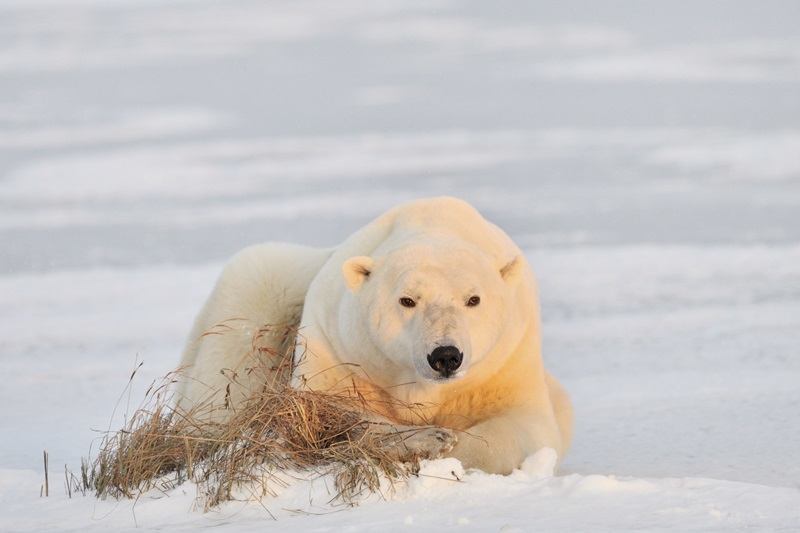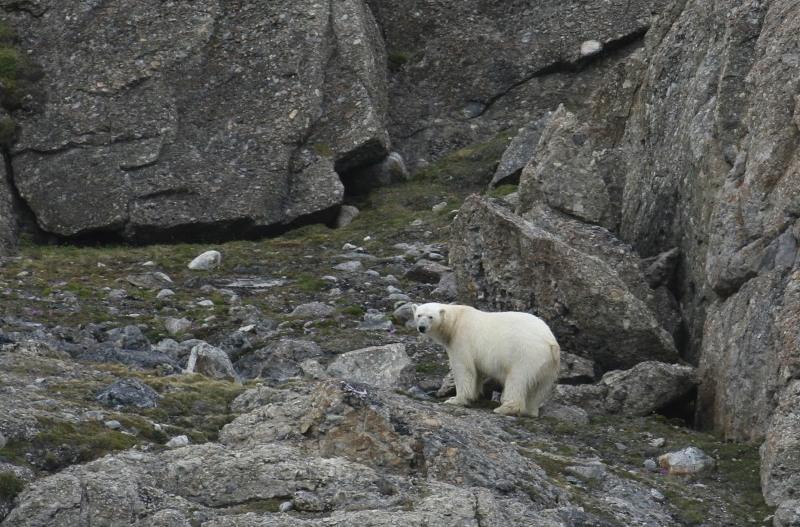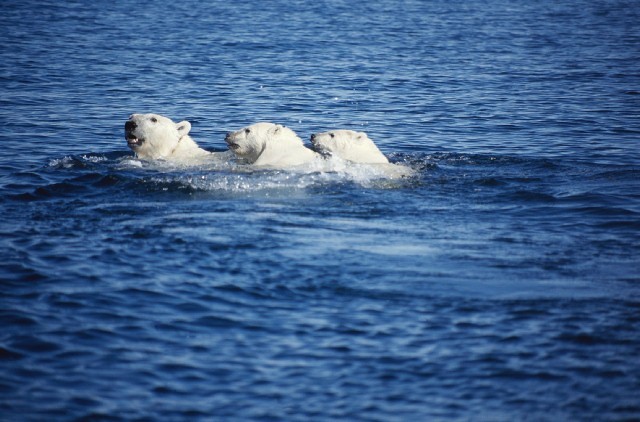Celebrate International Polar Bear Day
At once beautiful and powerful, polar bears have evolved over thousands of years to thrive on Arctic sea ice that is rapidly melting beneath their feet. Check out these photos to learn more about them and the threats they face.

Polar bears have called the Arctic home for 500,000 years. Their Latin name, ursus maritimus, means “sea bear”—a fitting name for this marine mammal who spends many months at sea each year.

With sows (female bears) weighing in at 330-650 lbs, and boars (male bears) an astounding 775-1,300 lbs or more, they are the world’s largest land predators and play an important role in the Arctic ecosystem. Arctic foxes and other animals scavenge on polar bear kills.

Polar bears have evolved to depend on fat-rich seals, whose blubber provides far more calories than the land mammals of the Arctic Tundra. Polar bears hunt seals where sea ice meets open water. As the sea ice retreats, polar bears are forced to spend more time on land, waiting for the ice to refreeze—and unable to hunt their primary food source.

Over in the Western Hudson Bay, warming air temperatures mean that ice-floe breakup is happening three weeks earlier than it did 30 years ago. That’s three weeks fewer to hunt and build up a fat store, and three weeks more to survive off it. Troublingly, the average weight of a lone female polar bear in this region plunged from 640 pounds in 1980 to 510 pounds in 2004.

Adult polar bears are strong swimmers and can survive for days at sea—but only recently needed to start using this skill. As Karen Oakley, a supervising biologist at the USGS Alaska Science Center told Reuters, “These long distances of open water didn’t use to exist in the southern Beaufort Sea. They didn’t have to [swim these really long distances] because they weren’t there.”
Photo © kevinschafer.com

Some cubs can make the long swim, but cubs can’t always match their mothers’ swimming strengths. A study of polar bears from 2004-2009 found that 45% of the observed polar bear cubs died in long-distance swims. While cub and adult survival both improved after the initial survey, the survival of “sub-adults” (2-4 year old cubs who leave their mothers and venture off on their own) did not improve.

In 2008, the polar bear became the first animal to be added to the Endangered Species Act because of global warming. Today, the International Union for Conservation of Nature (IUCN) reports that the global population of polar bears is just 20,000 to 31,000.

In October 2015, the U.S. Fish and Wildlife Service published a draft conservation management plan for polar bears to improve their status under the Endangered Species Act and the Marine Mammal Protection Act. The authors write, “The single most important action for conservation and recovery of polar bears is a global reduction in the emission of greenhouse gases contributing to Arctic warming.”

This photo earned the Grand Prize in the 2016 Nature’s Best Photography Awards. A female polar has her first litter around age five. Polar bears most commonly give birth to two cubs or “twins,” followed by single births. Though rare, litters of three and four cubs have been observed. Cubs stay with their mother for 2 to 2.5 years. The mother will not mate again until her cubs have left.
Photo © Daisy Gilardini

Recent news stories have revealed that the Arctic is now melting, even in winter. In August 2017, a gas tanker crossed the Arctic without the aid of an ice breaker for the first time ever. Fewer than six months later, another tanker did the unthinkable, crossing the Arctic with no ice breaker in January 2018. The lack of sea ice even at the height of winter has a devastating impact on the polar bear’s ability to hunt its primary food source, seals, whose blubber is one of the few sources of food calorie-dense enough to fuel these massive bears’ metabolisms, and which cannot be hunted from dry land.
Protect polar bears with a monthly gift to EDF
Symbolically adopt a polar bear with your new monthly gift and we’ll send you your choice of polar-bear themed gift along with a personalized certificate of adoption. Choose your monthy gift amount:










